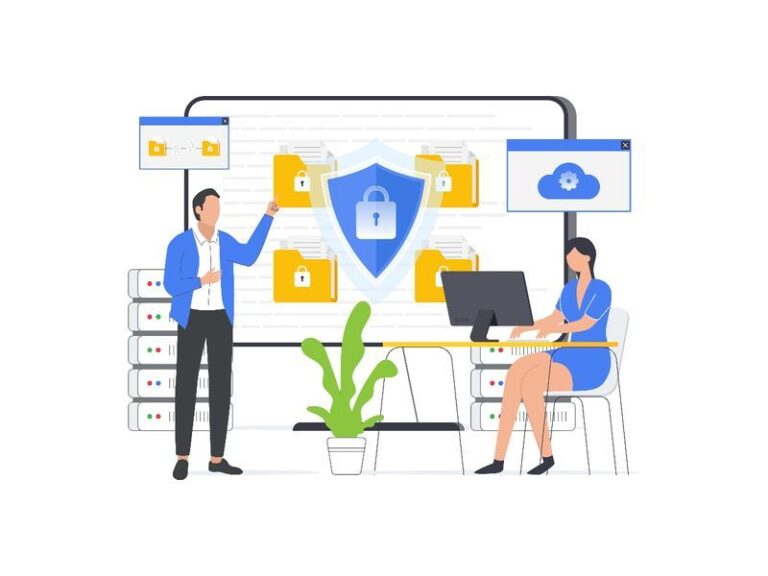
In today’s fast-paced digital landscape, organizations must continuously evolve their Identity and Access Management (IAM) strategies. Traditional IAM solutions, while effective, often struggle to keep up with dynamic security threats, user expectations, and compliance requirements. This is where Continuous Automation in IAM becomes a game-changer. It combines an internal programmatic software development approach with product capabilities to enhance security, efficiency, and user experience.
This blog explores the benefits of Continuous Automation in IAM, when and why organizations should introduce it, and how to implement it effectively.
What Are the Benefits of Continuous Automation in IAM?
Continuous Automation in IAM streamlines user provisioning, access management, compliance enforcement, and security monitoring. Here’s how it benefits organizations:
- Enhanced Security:
- Automates access control policies and ensures real-time adjustments based on risk factors.
- Reduces human error, which is often the weakest link in security management.
- Detects and remediates identity threats faster with AI-driven analytics.
- Operational Efficiency:
- Eliminates manual IAM processes, reducing administrative overhead and operational costs.
- Speeds up onboarding and offboarding processes, improving workforce productivity.
- Ensures consistent enforcement of security policies across all systems.
- Improved Compliance & Audit Readiness:
- Automates compliance enforcement, ensuring adherence to regulatory frameworks like GDPR, HIPAA, and SOC 2.
- Provides real-time reporting and continuous monitoring to simplify audits.
- Reduces risk by ensuring that access privileges are correctly assigned and revoked.
- Scalability & Flexibility:
- Adapts to growing business needs and evolving regulatory environments.
- Supports integration with cloud-based and on-premises systems.
- Enables seamless IAM adjustments as new business units or applications are added.
When Should You Introduce Continuous Automation in Your Organization?
While Continuous Automation in IAM is beneficial for all businesses, the right time to introduce it depends on several factors:
- Growing Workforce & Digital Footprint: If your organization is expanding, managing user identities manually becomes impractical. Continuous automation can help streamline IAM operations at scale.
- Frequent Compliance Audits: If compliance demands are increasing, automation ensures that you stay audit-ready with minimal manual intervention.
- Rising Security Threats: If your organization has experienced data breaches or unauthorized access incidents, automation can proactively mitigate risks.
- Cloud & Hybrid IT Adoption: If your business is shifting to cloud-based applications, automated IAM solutions ensure secure access across hybrid environments.
Why Should You Introduce Continuous Automation in IAM?
- To Future-Proof IAM Strategies: Cyber threats are evolving, and IAM solutions must be adaptive to combat these risks effectively.
- To Enable Zero Trust Architectures: Continuous automation helps enforce strict access controls based on real-time context and risk factors.
- To Improve User Experience: Employees, customers, and partners expect seamless, secure access. Automating IAM ensures frictionless authentication while maintaining security.
- To Reduce IT Burden: IT teams often struggle with managing identities manually. Automation eliminates bottlenecks, allowing IT teams to focus on strategic initiatives.
- To Minimize Costs & Maximize ROI: Automating IAM processes reduces helpdesk support costs, operational inefficiencies, and security breach expenses.
How to Introduce Continuous Automation in IAM?
Implementing Continuous Automation in IAM requires a structured approach. Here’s a step-by-step guide:
Assess Current IAM Maturity
- Evaluate existing IAM processes, identify inefficiencies, and map out automation opportunities.
- Conduct a risk assessment to understand security vulnerabilities.
Define IAM Automation Goals
- Determine key objectives such as reducing manual processes, improving compliance, and enhancing security.
- Align IAM automation with business priorities and regulatory requirements.
Select the Right IAM Solution
- Choose an IAM platform that supports automation features like identity orchestration, AI-driven access control, and self-service capabilities.
- Ensure the solution integrates seamlessly with cloud, on-prem, and hybrid environments.
Implement Role-Based & Attribute-Based Access Controls
- Automate user provisioning and de-provisioning based on roles and attributes.
- Apply Just-In-Time (JIT) access provisioning to limit exposure to sensitive systems
Leverage AI & Machine Learning for Threat Detection
- Use AI-driven behavior analytics to detect anomalies and unauthorized access attempts.
- Implement risk-based authentication and adaptive access controls.
Integrate with Security & Compliance Frameworks
- Align IAM automation with security frameworks such as Zero Trust, NIST, and CIS Controls. .
- Ensure continuous monitoring and auditing capabilities to meet compliance needs.
Train Employees & Create Awareness
- Educate workforce on the benefits and usage of IAM automation tools.
- Conduct phishing simulations and security awareness programs to reinforce best practices.
Monitor, Optimize & Scale
- Continuously evaluate IAM performance and adjust automation rules as needed.
- Scale IAM automation to accommodate new business applications and digital transformation initiatives. controls.
Conclusion
Modernizing your digital platform with Continuous Automation in IAM is not just an upgrade; it’s a necessity for businesses aiming to enhance security, improve efficiency, and stay ahead of compliance regulations. By introducing automation strategically, organizations can create a secure and scalable IAM ecosystem that aligns with evolving business and security needs.
Are you ready to take your IAM strategy to the next level? Trevonix can help you implement a tailored IAM automation roadmap. Contact us today to learn more!